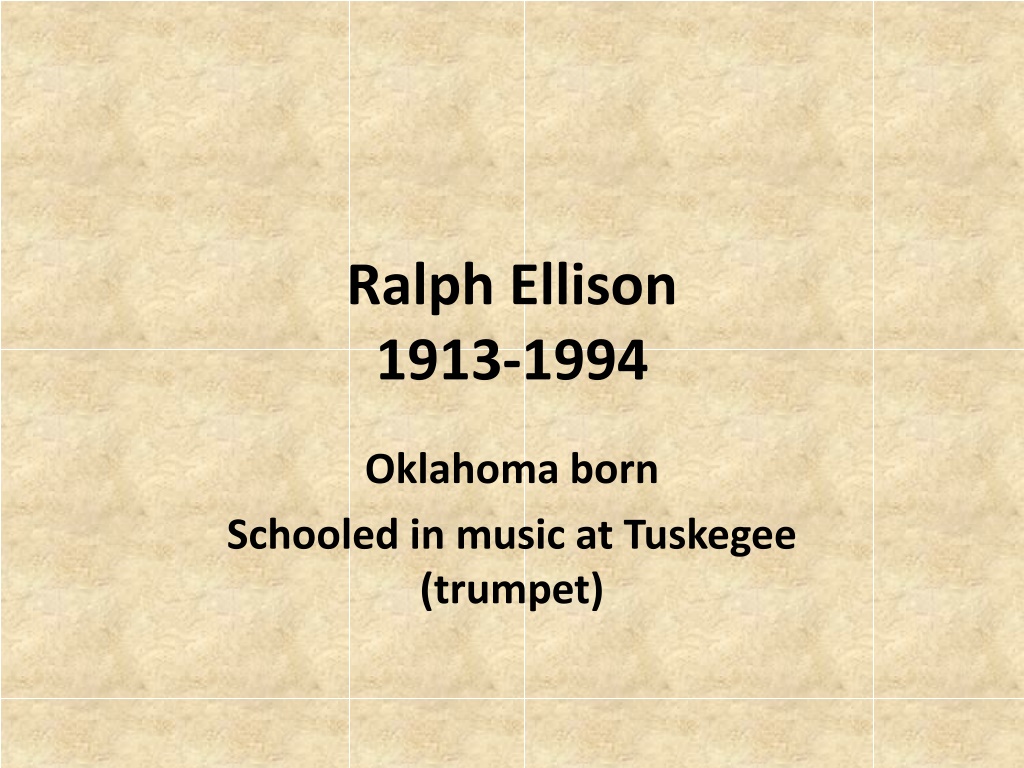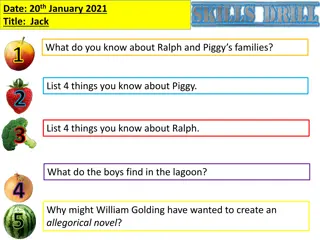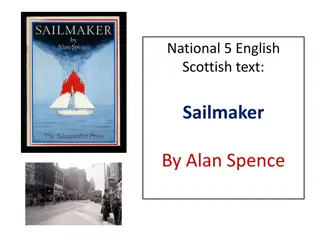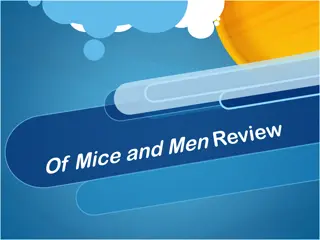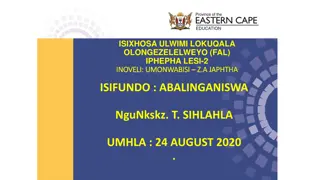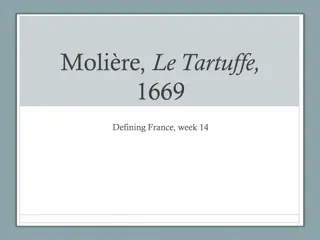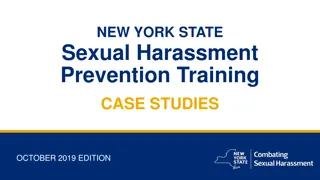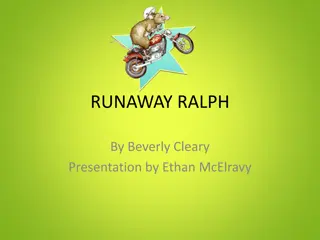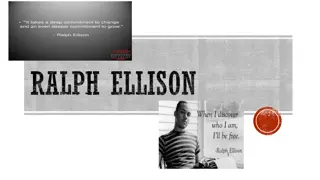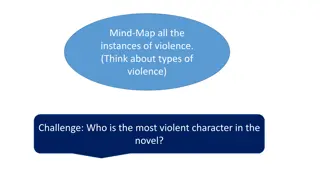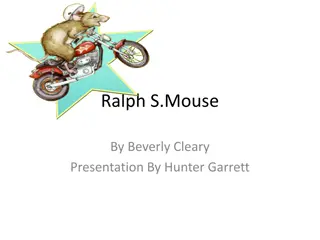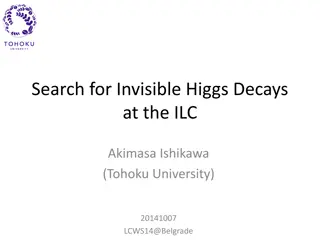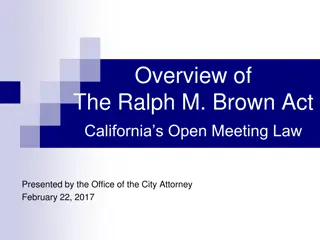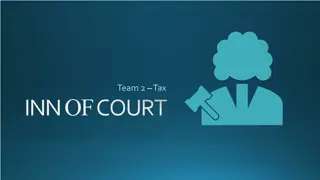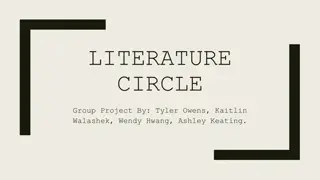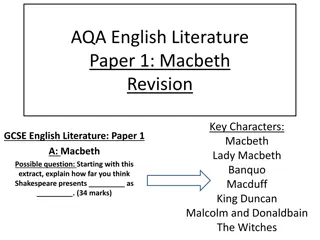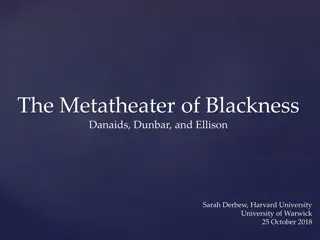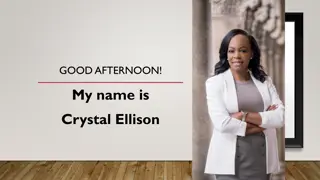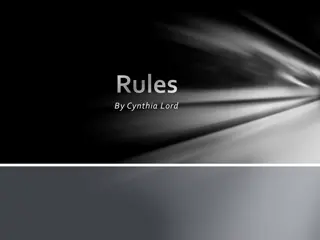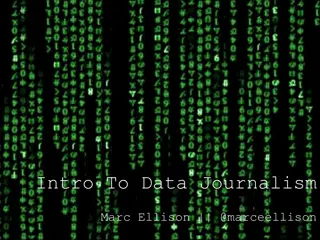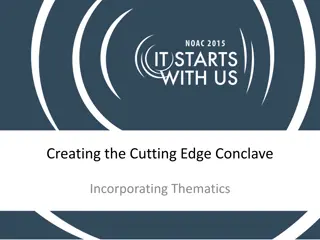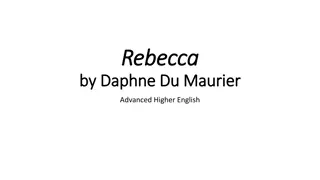Exploring the Themes and Characters in Ralph Ellison's Invisible Man
Ralph Ellison's "Invisible Man" delves into the complexities of identity, race, and society through the journey of an unnamed narrator. Set against the backdrop of mid-20th century America, the novel follows the protagonist as he navigates through various encounters and experiences that challenge his understanding of self and society. From his time at a prestigious college to his involvement with political organizations in New York City, the narrator's quest for visibility and meaning sheds light on the intricacies of human existence and societal structures.
Download Presentation

Please find below an Image/Link to download the presentation.
The content on the website is provided AS IS for your information and personal use only. It may not be sold, licensed, or shared on other websites without obtaining consent from the author. Download presentation by click this link. If you encounter any issues during the download, it is possible that the publisher has removed the file from their server.
E N D
Presentation Transcript
Ralph Ellison 1913-1994 Oklahoma born Schooled in music at Tuskegee (trumpet)
730 Riverside Drive (at 150th St) New York City
Plot CHARACTERS: The narrator (Invisible Man); Mr Norton (rich, white, trustee of college); Jim Trueblood (uneducated and incestuous); Reverend Homer A. Barbee (blind Homer orator who visits college) Dr. Bledsoe (president of college); the Veteran (condemns college); Young Emerson (son of college trustee); Mary (motherly black woman); Brother Jack (leader of Brotherhood; white; glass eye); Tod Clifton (black; handsome and intelligent; leaves Brotherhood); Ras the Exhorter (black nationalist); Rinehart (man of many identities); Sybil (white woman who has affair with IM)
Outline PROLOGUE: On individuality COLLEGE: 1. Battle Royal 2. Norton hears Trueblood s story of incest with his daughter 3. Norton at the Golden Day on the day that the inmates of the local veterans hospital come 4. Norton and IM return; IM faces Bledsoe 5. Homer Barbee s sermon about the Founder and the success formula 6. Bledsoe to IM on the necessity of lying to whites; kicks him out
Outline continued: NEW YORK CITY 8. Bus-ride to NYC; last lesson from mad veteran; Harlem 9. IM looks for a job 10. IM meets the rapping man; meets Young Emerson 11Day at the paint factory; Brockway; the union; paint explosion 12. Electric lobotomy 13. Mary Rambo takes IM in; evicted from Men s House 14. Yams; old couple evicted; IM s speech meets Brother Jack (local Brotherhood Party, i.e. Communist Party organizer) 15. Hired by Brotherhood; Jack takes him to party; new name; dances with Emma 16. Goodbye to Mary; moves to Brotherhood apartment downtown 17. Makes first Brotherhood speech 18. First rally; meets Tod Clifton; meets Ras the Exhorter 19. Good talk with Tarp; IM denounced by Westrum 20. Transfer downtown to speak on the Woman s Question; sexual affair; faces the ass struggle rather than the class struggle 21. Harlem again; Clifton shot by police; contemplates failure on subay 22. Clifton s funeral march; IM s speech 23. Brotherhood s policy changes without IM knowing; he is denounced 24. IM realizes he can be mistaken for Rinehart (numbers man and minister) and plans to subvert the Brotherhood 25. Jack s party; IM takes Sybil home; gets call to hurry to Harlem 26. Riot in Harlem; looting; IM driven underground EPILOGUE: Mr Norton again; what is destiny?
What kind of book? Study in comparative humanity Political Point (p.xx) Relation to American and other literatures Melville, Twain, Dostojevsky. Eliot, Joyce, etc Norton Starts: underground, room with 1369 lights
Episodes Battle Royal Norton The Golden Day (cf Lewis Mumford) Lobotomy scene
Rebirth? new citizen (345-6) The question of race (292) The question of the White line One-eyedness The paint factory
What models? Booker T. Washington Frederic Douglass Tod Clifton
Criticism and Response Some reviewers, from the best of intentions, have assured their readers that this is a good novel and not merely a good Negro novel. But of course Invisible Man is a Negro novel -- what white man could ever have written it? It is drenched in Negro life, talk, music: it tells us how distant even the best of the whites are from the black men that pass them on the streets; and it is written from a particular compound of emotions that no white man could possibly simulate. To deny that this is a Negro novel is to deprive the Negroes of their one basic right: the right to cry out their difference. Irving Howe, The Nation, 1952 If Native Son is marred by the ideological delusions of the thirties, Invisible Man is marred, less grossly, by those of the fifties. Irving Howe, Native Sons and Black Boys (Dissent, 1963) For there is a way for Negro novelists to go at their problems, just as there are Jewish or Italian ways. Mr. Ellison has not adopted a minority tone. If he had done so, he would have failed to establish a true middle-of-consciousness for everyone. Saul Bellow, Commentary, 1952
individual assertion within and against the group -- jazz
